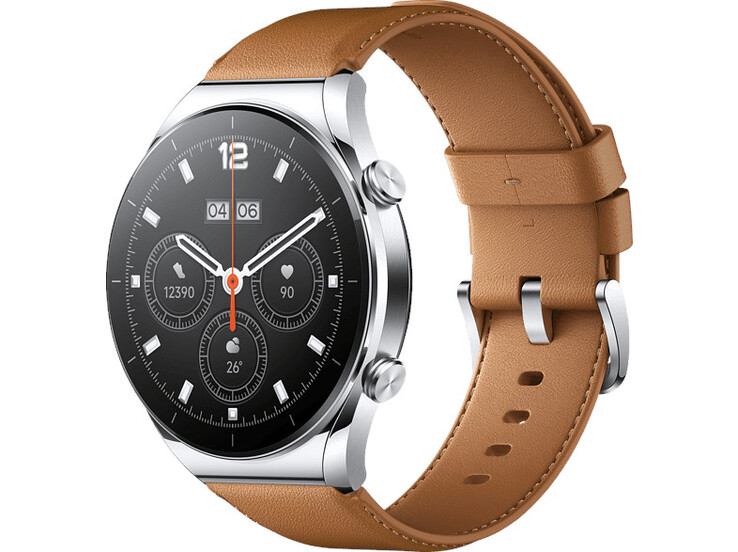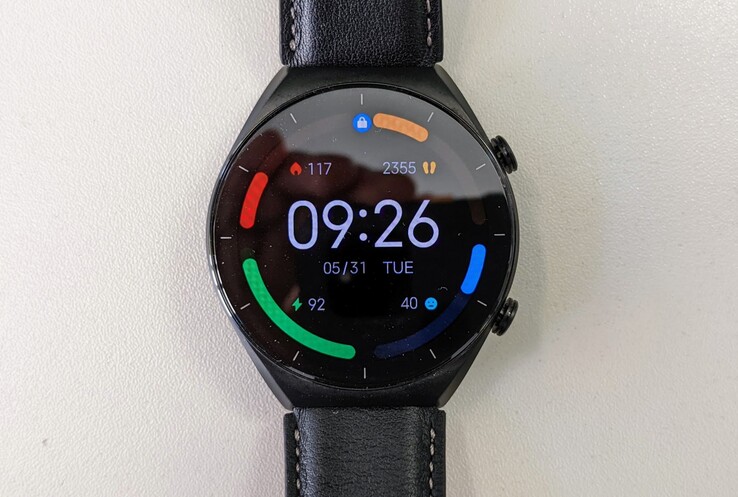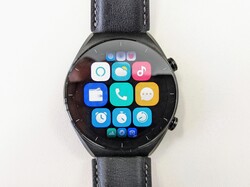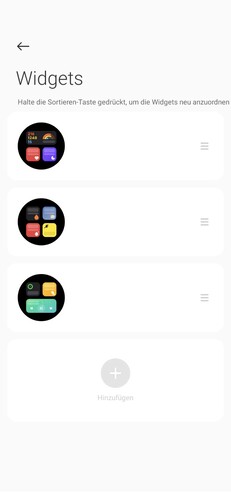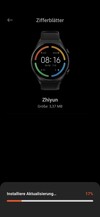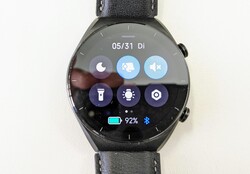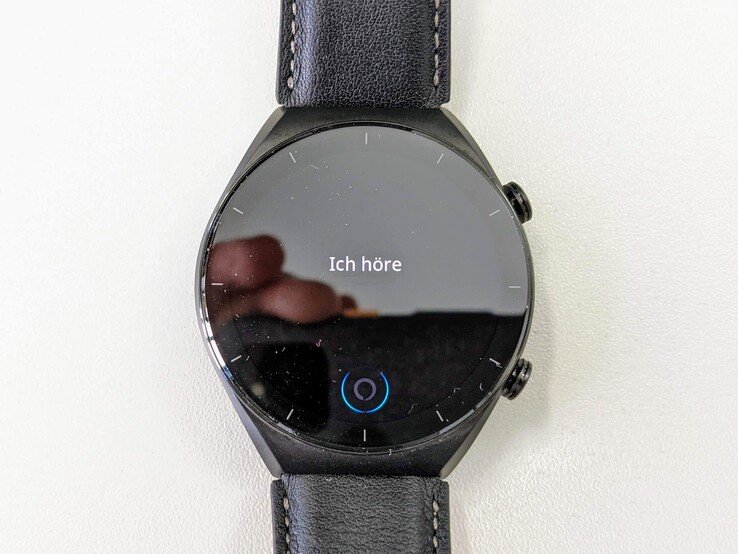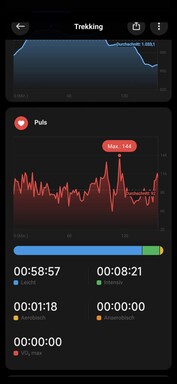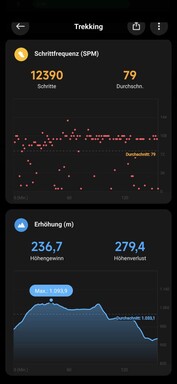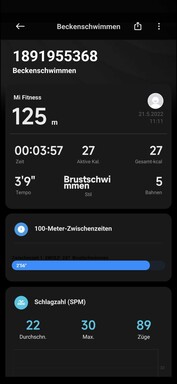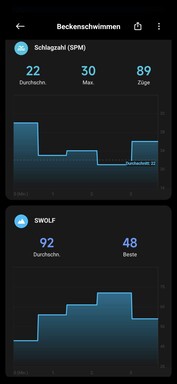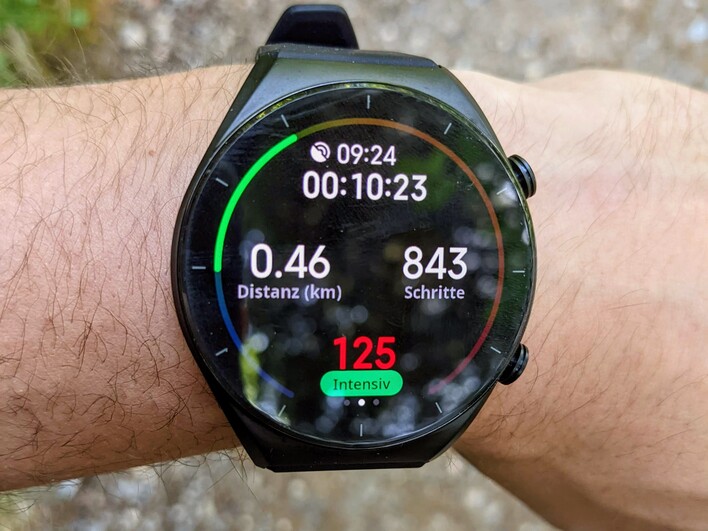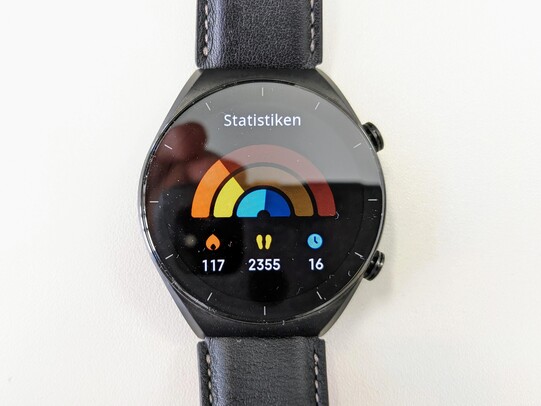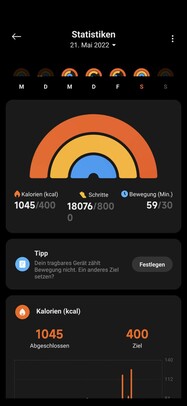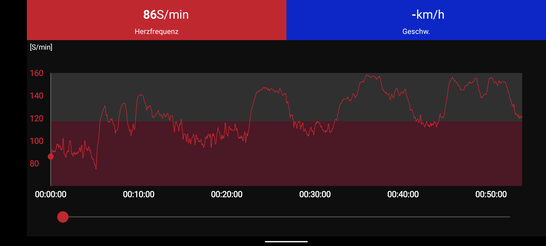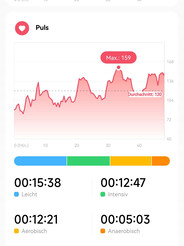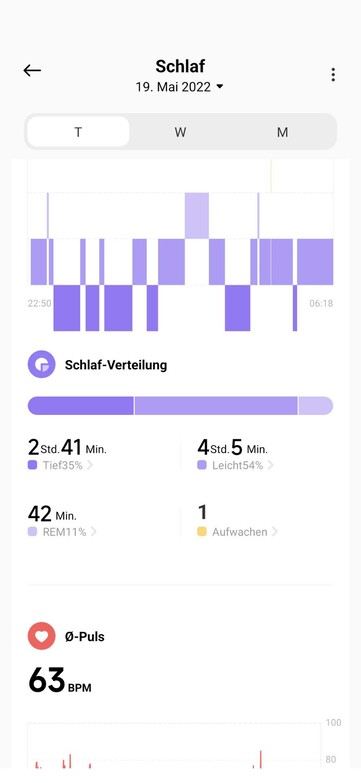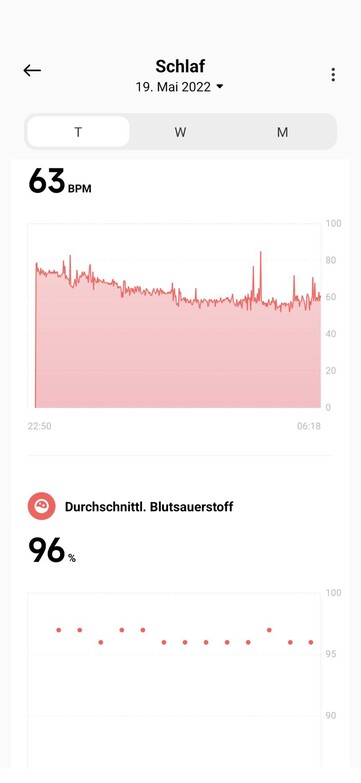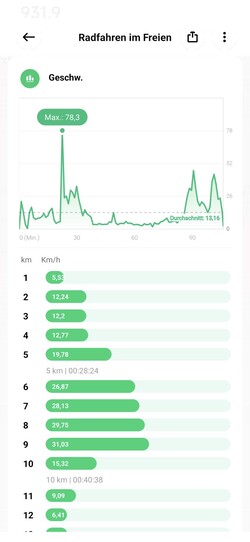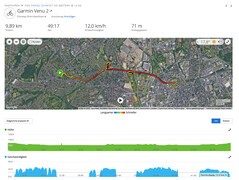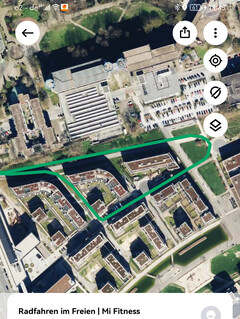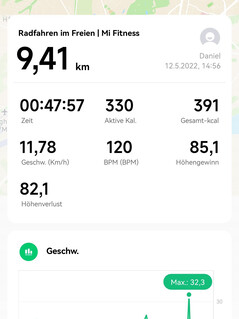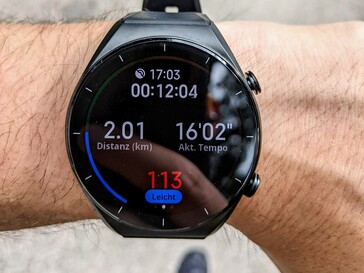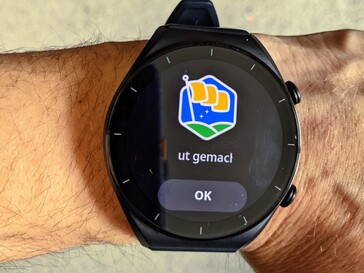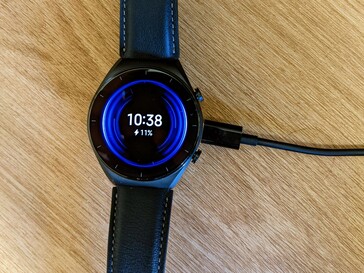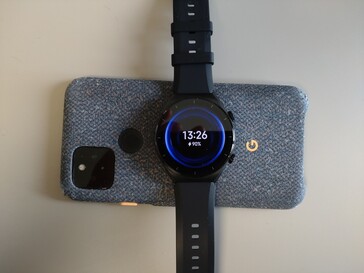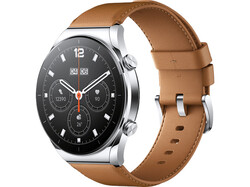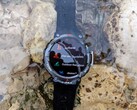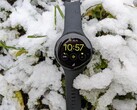Xiaomi Watch S1 smartwatch review: Allrounder with shortcomings
The Watch S1 is currently the top high-end smartwatch from Xiaomi. Our review sample comes with a black stainless steel case and black straps. Alternatively, a silver variant with brown straps is available. There are no different case sizes, nor is there a version with its own SIM card. Two different straps are provided: leather for a smart casual look in everyday life, and rubber for exercise activities. The review will reveal whether the Watch S1 can handle both.
Case and features: Xiaomi with stainless steel case
Xiaomi makes use of a stainless steel case for the S1. This not only intended to make it particularly robust, but also to give it a high-quality appearance. This is accentuated by a fine texture which, according to Xiaomi, is the result of hand-polishing by traditional watchmakers. The use of steel is clear here: We weighed 65 grams with a leather strap, making the Xiaomi noticeably heavier than, for example, a Huawei Watch GT Runner with its plastic case. Sapphire glass is used for the 1.43-inch display. The materials are haptically very pleasing and well-made. No scratches were detected during examination and testing, but the glass is susceptible to fingerprints. There are two buttons on the right side of the watch that stick out: their pressure point is good, but they prove to be slightly loose when you fiddle with them. The buttons can also be rotated, but this has no function in use.
Underneath the keys is a speaker and on the opposite side of the case are the microphone openings. The watch thus offers the necessary hardware for phonecalls, a voice assistant and music playback - more on that later. Wireless charging (Qi standard) is supported and functions without any contact to the case. The straps correspond to the 22 millimeter standard and can be replaced cheaply. The original parts have small levers on the spring bars, so that replacement without tools is possible
The optical sensors for the extensive monitoring features are located on the plastic underside. In addition to pulse rate, blood oxygen is also monitored. Moreover, the Watch S1 offers Bluetooth, GNSS, a barometer and NFC for contactless payments. However, only the Xiaomi Pay service is installed, which currently does not function with any German banks (Note for international readers: compatability with Xiaomi Pay may differ from region to region). Payments were therefore not possible with the watch during the review. The watch is also capable of establishing Wi-Fi connections on its own.
Setup and Operation: Swipe and press
The Mi Fitness app, which is available for both Android and iOS, is required to set up the Xiaomi Watch S1. This is not the Mi Fit app that was recently renamed Zepp Life, but a standalone program. Once installed, the app automatically searches for suitable devices in the vicinity, which were quickly found under testing. The rest of the setup runs quickly. After the app has access to notifications, a short tutorial on the use of the watch begins. However, not all settings are queried upon booting the watch for the first time: Many functions are deactivated ex works and are only discovered and activated (if so desired) when browsing through menus and submenus. Occasionally, activation of certain features and settings in the Mi Fitness app results in further options. An example of this is the sleep tracking feature, the activation of which brings up the option for "Advanced Monitoring", which collects more data. If you select this option, the app also warns you about higher battery consumption. The other menu items are structured in a similar way.
Further adjustments on the watch itself are possible via the settings, such as changing the clock face. Seven clock faces are stored on the device ex works, and further adjustments to the content displayed are possible in some cases. Generally, the watch faces are not clickable. For example, clicking on the battery indicator does not lead to the corresponding menu. Additional clock faces can be downloaded free of charge via the smartphone app. However, we had problems downloading backgrounds when using mobile data in several cases.
Headphones can be connected directly to the watch, although music cannot be stored offline. There are also settings for sounds, display brightness, always-on display, night mode or the display lock. The settings on the watch are thus very extensive. If longer inputs are necessary, such as entering the WiFi password, the watch refers to the smartphone app and opens the corresponding menu directly.
The display is activated either via one of the buttons or a twist of the wrist. Touching the display does not activate it. A swipe from the top to bottom leads to the message overview, where individual chats can be opened. Swiping from bottom to top opens the quick settings with access to night mode, activation of lift detection, sounds, flashlight, permanent activation of the display, alarm clock, and other settings. Side swiping leads through various pages with widgets. Three pages are provided by default, but the app lets you customize the amount, selection and arrangement of the widgets. Most widgets can be clicked and lead to the respective area or menu. The media widget can be used to control the music on the smartphone or on devices connected to the smartphone, such as speakers in the smarthome. Side swiping in the opposite direction leads you back through the pages.
Pressing the upper button takes you back to the home screen. From the home screen, pressing this button again takes you to the app overview. The smartphone app is used to select whether the programs on the watch should be displayed as a grid or scrollable list. The lower button leads to the exercise and training menu, where supported sports are listed. Alternatively, the button can also be set for a specific sport, meaning that recording and monitoring starts directly when pressed.
Telephony and Notifications: Only reading is possible on the Watch S1, not answering
The watch has a microphone and a speaker and thus enables telephony as long as a smartphone is paired via Bluetooth. A standalone data connection is not possible due to the lack of a SIM card. The connection is good enough for both parties (caller and responder), but the speaker on the watch is not very loud. Calls can also be carried out via the watch. However, there is no access to the entire phonebook, but only to the call list. If the desired contact cannot be found there, then the smartphone has to be pulled out. Calls via the voice assistant are not supported.
Notifications from messenger apps, mail programs and other app notifications are displayed as pop-up messages in all menus and, if desired, also during sports sessions. The messages can still be displayed in the message menu after they have popped up. But if a message is opened and closed, it disappears from this menu. The smartphone has to be taken out for a second look later. Emojis are displayed by the watch, but not images. Voice messages cannot be played either. Replies are not possible at all with the watch, even preconfigured quick replies are missing. Reading messages on the watch has no influence on the "read" status on the smartphone.
Voice Assistant: Amazon's Alexa comes into play
Xiaomi uses Amazon's Alexa as a voice assistant on the Watch S1. However, the digital assistant has to be activated specifically via the menu; a direct voice command without prior input on the watch is not possible. Alexa also only works when the corresponding Alexa app is installed on the smartphone. The assistant works quickly, but the results are displayed only on the screen; there is no voice output despite the speaker. Alexa was a little unreliable from time to time under testing; voice inputs were not always recognized or implemented.
Health and Fitness: Lots of sports, hardly any networking
The Watch S1 offers 117 different training modes. We did not test all of them, but we went jogging, cycling and swimming with the watch. If desired, the watch can be set to automatically detect (and start recording) when the user is running or walking. For all other sporting activities, activation via the sports menu is necessary. The distance covered is recorded via GNSS, and there is a barometer for measurement of the altitude. For running, the smartwatch provides information about pace, pulse rate, steps and stride rate. The total data is also broken down into more specific data for the individual kilometers. In addition, the watch vibrates with every completed kilometer and provides a status update. However, estimations of workout periods and recommendations for rest periods are lacking. On the positive side, the Watch S1 automatically detects short breaks during running and pauses the workout, which then automatically continues when you start running again. Annoyingly, the smartwatch does not remember the selected view in the training menu, so the user has to swipe to the desired view again every time the slideshow goes out.
Xiaomi specifies that the Watch S1 can withstand a water pressure of 5 ATM and thus survive up to 50 meters water depth for a short time without damage. In real-world testing, the smartwatch managed a trip to the swimming pool without any problems. The watch automatically detects the swimming style and provides values for the number of lanes and the stroke rate per lane. The SWOLF value is also provided, which is the time in seconds required to complete a lane in addition to the number of strokes.
Currently, the Mi-Fitness app can only be linked to a third-party app for data exchange (Strava). Other providers are missing. A link with Google Fit is also not possible.
Activity Goals
The Watch S1 provides comprehensive information about daily activity goals, which are displayed in colorful semicircles. Calories burned, steps taken and minutes spent in motion are indicated. The respective target values can be adjusted individually. Furthermore, the smartwatch also shows blood oxygen saturation and stress levels. The stress level is given on a scale from 1 to 100 and is based on heart rate variability. Blood pressure measurements are not offered, while VO2max values are provided during training.
Heart rate measurement: The Watch S1 is reliable
The Xiaomi Watch S1 performs as it should in terms of heart rate measurement. A Polar H 10 chest strap was used as the comparison device under testing. Both devices measured the resting heart rate identically. This was also very much the same for training: Both the average heart rate and the peak values only deviated by 0.6 percent.
Sleep tracking: reliable recording but without smart alarm clock
The Watch S1's sleep tracking also proved very reliable under testing; waking phases were always detected. If the corresponding menu item is activated, the smartwatch not only differentiates between light and deep sleep, but also tracks phases of REM sleep. The quality of the sleep is evaluated by the app, and there is also additional information about the importance of the sleep phases and tips for better sleep. The results can be displayed in the form of days, weeks or even months. Values for pulse and blood oxygen saturation during the night are also displayed.
The watch itself also displays the sleep data, but the menu item has to be clicked on specifically for this. A downside is the lack of an automatic notification upon waking up. The possibility of using the sleep data for the alarm clock is also missing; the Watch S1 does not offer a smart alarm function. Under testing, there was one night when the watch was accidentally turned off due to movement.
GNSS and Navigation: The Xiaomi Watch is inaccurate
Xiaomi employs dual-band satellite communication ranging from GPS, Glonass, BeiDou, Galileo to QZSS. Connections are established very swiftly; there were no delays or interference under testing. The Watch S1 also measures altitude independently of satellites via air pressure.
However, a test run alongside the Garmin Venu 2 comparison device clearly shows that the measured distance differs noticeably. While the Garmin indicates a total distance of 9.89 kilometers at the end of the test run, the Xiaomi only measured 9.41 kilometers, a deviation of almost five percent.
Furthermore, individual peaks are noticeable in the Xiaomi's speed measurement. Alongside a number of plausible values, there were individual peaks with impossible values in almost all workouts, such as a peak speed of 58.9 km/h when hiking. The GPS thus leaves a mixed impression. Unfortunately, the Xiaomi Watch S1 does not offer a navigation app, nor is it possible to export or import GPS data.
Display: Very nice, but a bit dark
The display is a highlight of the Xiaomi Watch S1. Thanks to the OLED technology used, the colors of the 1.43-inch screen are crisp and the black levels excellent. Viewing angles are also pleasing and all images are nicely sharp. Only the maximum brightness could be a bit higher. We measured a maximum brightness of 444 cd/m². This means that the clock can always be seen. In bright sunlight, however, reading is sometimes a little strenuous. The display glass feels dull when wiped, and is also quite susceptible to fingerprints. The refresh rate is 60 Hz, and the resolution 466x466.
Performance and Runtime: Fast and enduring
Xiaomi does not provide any information about the installed SoC or memory. We could not determine any system stutters in practice. Animated clock faces also pose no problem for the watch. Switching between the individual pages with widgets is just as smooth as scrolling through the menus and apps. Even several quick inputs in succession do not cause the system to stutter or even crash.
The memory provided is needed for additional watchfaces, training data and apps. However, app selection is extremely limited; only four are currently available in the store. Saving music directly on the watch is also not possible.
Battery Life: Xiaomi promises too much
The Watch S1's battery life is very dependent on the selected settings. If all measurements are activated at the highest level, as well as the always-on display, the S1 will run out of power after two to three days of training with GPS. When sports and the always-on display are not used, a week of battery life is realistic, assuming continued use of all sensors and 24 hours of daily wear. Xiaomi states that the 470 mAh battery should last 12 to 24 days. These values - at least the 12 - are feasible, but only when some of the watch's functions are deactivated.
The smartwatch is charged wirelessly using the Qi standard. Reverse wireless charging is also possible. Charging times varied under testing: For the fastest charge, the Xiaomi Watch to go from 10 to 90 percent in one hour. A charge from 90 to 100 percent required an additional 10 minutes. The always-on display turns off after a few minutes during charging. The USB charging cable is unfortunately rather short at 40 centimeters, but this can be replaced. A power adapter is not included in the scope of delivery.
Pros
Cons
Verdict: The Watch S1 is well equipped, but incomplete
The Xiaomi Watch S1 is supposed to be a jack of all trades: a smart partner in sports and a sleek companion in everyday life. In terms of equipment features, the smartwatch is impressive. The stainless steel case gives a solid impression, two straps for different purposes are provided, and Qi charging is supported. It also scores well in terms of a crisp display and decent battery runtime.
The Xiaomi Watch S1 is well equipped, but unfortunately still incomplete.
However, the smartwatch does have several shortcomings. Software is lacking in some areas: Interfaces for third-party providers such as Google Fit are missing, and the NFC interface cannot be used in Germany currently because no banks are supported. Moreover, the Watch S1 falls short in the area of notifications because no replies are possible. It is also incomprehensible why the sleep data cannot be not used for a smart alarm clock. But Xiaomi may be remedy these issues with a software update as well as the lack of apps in its own app store.
The Huawei Watch GT 3 is in the same league as the Xiaomi Watch S1. Its battery lasts even longer and it also offers way-back navigation. Samsung's Galaxy Watch 4 offers an even larger feature set with an LTE modem and ECG measurement, but a shorter battery life.
Price and Availability
At the time of publishing, the Xiaomi Watch S1 was available at Amazon US for US$ 270. Those who can do without Qi charging can get the otherwise equally configured Xiaomi Watch S1 Active for US$ 221.


 Deutsch
Deutsch English
English Español
Español Français
Français Italiano
Italiano Nederlands
Nederlands Polski
Polski Português
Português Русский
Русский Türkçe
Türkçe Svenska
Svenska Chinese
Chinese Magyar
Magyar